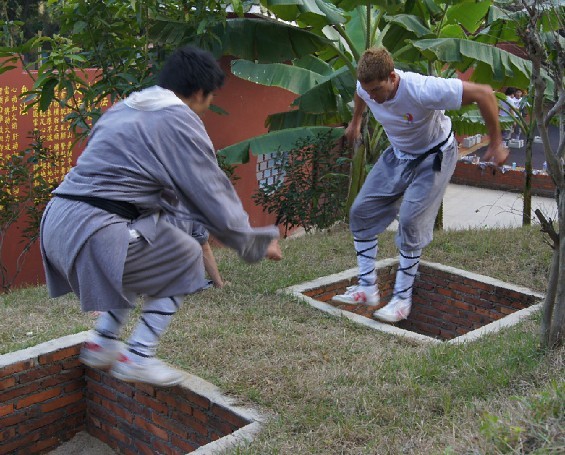- 当前位置:首页 > 传统文化 > 吉祥图案<<关闭窗口
-
吉祥图案
发布时间:2013-07-04 来源:中国南粤禅武文化网 [浏览次数:398 ]


在中国民间,流传许多含有吉祥意义的图案。每到年节或喜庆的日子,人们都喜欢用这些吉祥图案装饰自己的房间和物品,以表示对幸福生活的向往,对良辰佳节的庆贺。
中国的吉祥图案始于距今3,000多年前的周代,后来在民间流传开来。今天,吉祥图案仍然是中国人生活中不可缺少的内容。
中国的吉祥图案内容极其广泛,这里介绍最常见的几种:
“双喜”字,是双喜临门、大吉大利的意思,民间常在办喜事时采用。
“寿”字,字头经过加工美化,变成对称的图案,是长寿的意思。
“福寿双全”,是由蝙蝠和寿字组成的图案。“蝠”与“福”同音,表示幸福长寿。
两个“有”字组成的对称图案,意思是顺也有,倒也有。在中国农村常用来贴在收藏谷物的器具上,表示丰收富裕。
“如意头”,象征顺遂如意。
“百吉”,也叫“盘”。它无头无尾,无始无终,可以想象为许多个“结”,谐“百吉”之音,作为百事吉祥如意的象征,也有福寿延绵、永无休止的意思。
“五福捧寿”,图案中五个蝙蝠环绕?一个寿字。五福是长寿、富贵、康宁、道德、善终。
“四合如意”,四个如意从四面围拢勾连起来,象征诸事如意。
In China, many auspicious patterns are popular. On the occasion of the New Year, festivals or festive days, people like to decorate their rooms and articles with such auspicious patterns, expressing their desire for a happy life and celebrations on a propitious time and festive day.
These patterns emerged in the Zhou Dynasty more than 3,000 years ago, and then became popular among the Chinese people. Nowadays, they are still an indispensable part of Chinese life. These auspicious patterns cover a wide range, and here are several commonly seen:
The pattern of double happiness means that two happy events occur at the same time, representing extreme auspiciousness. People often use this pattern when celebrating their weddings.
After being embellished, the Chinese character of longevity (寿) became a symmetrical pattern.
The pattern of good fortune (福) and longevity (寿) is composed of the character of bats (蝠) and longevity (寿). Since the pronunciation of the bat is homophonic to that of good fortune (福), this pattern indicates good fortune and longevity.
The symmetrical pattern consisting of two 有 (possession) means that there is 有 when the pattern is upright or viewed upside down. In China's rural areas, the pattern is often pasted on utensils for storing corns, meaning a bumper harvest and prosperity. The pattern of the head of ruyi (an S-shaped wand or scepter, usually made of jade) symbolizes smoothness and good fortune.
The pattern of baiji (one hundred luck) is also called panchang. It has no beginning and no end, and thus can be conceived as many knots (结), whose pronunciation of the Chinese character is homophonic to that of 吉 (luck), symbolizing one hundred events are lucky and auspicious and also indicating happiness and longevity are continuous without end.
In the pattern of "five good-fortunes holding longevity in the center", five bats encircle a Chinese character 寿. The five sectors of good fortune are longevity, wealth and rank, health, morality, and a natural death.
In the pattern of "four ruyi enclosing each other", four ruyi are enclosed and connected with each other on four sides, symbolizing everything goes as one wishes.
【来源:中国华文教育网】
- 热门文章
-
- [2018.07.03]香港禅武堂拜访禅武国际联盟主席王德庆老师
- [2018.01.06]禅武国际联盟培养洋弟子促进中外人文交流
- [2014.03.22]禅武中心五周年邀请以及2014年办班计划
- [2015.04.11]香港惠州新动力启动与禅武中心共建禅武夏(冬)令营五周年规划
- [2013.07.03]禅武中心成为国侨办中华才艺功夫龙狮培训基地















